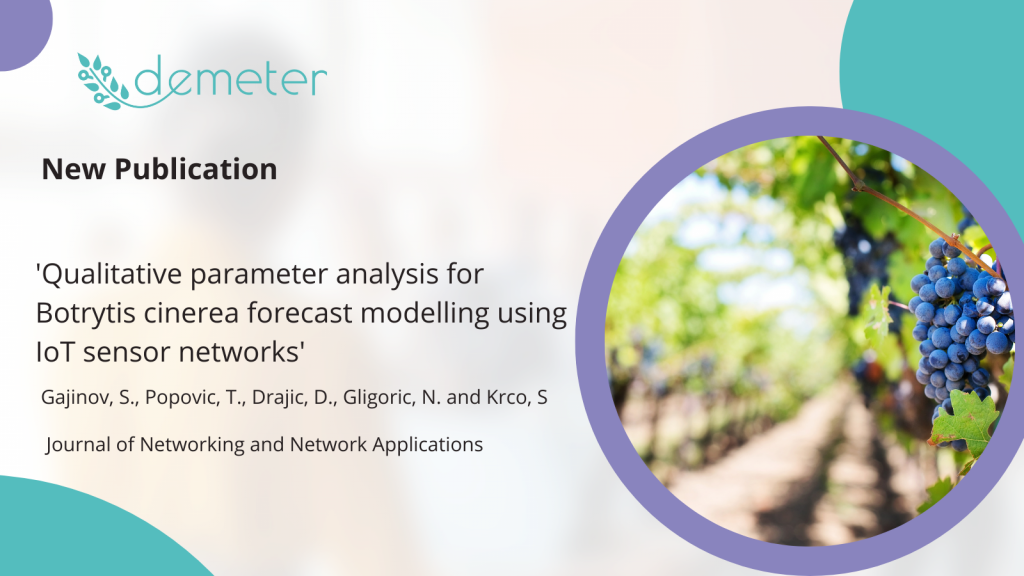
Researchers in DEMETER from DunavNET, University of Donja Gorica and University of Belgrade have published a paper in the Journal of Networking and Network Applications (2022). The paper is titled, “Qualitative parameter analysis for Botrytis cinerea forecast modelling using IoT sensor networks’. Botrytis cinerea is a fungus that affects many plant species but attacks wine grapes frequently. The research leading to these results received funding from the European Union’s Horizon 2020 — The EU Framework Programme for Research and Innovation 2014–2020, under DEMETER.
Abstract: This paper provides results of an evaluation of a fungal disease Botrytis cinerea forecast model (Model for Botrytis cinerea appearing) in vineyards for qualitative analysis of parameters which affect the development of the disease by using data from a network of connected sensors (air temperature and relative humidity, rain precipitation, and leaf wetness). The fungal disease model used by agronomists was digitalized and integrated into agroNET, a decision support tool, helping farmers to decide when to apply chemical treatments and which chemicals to use, to ensure the best growing conditions and suppress the growth of Botrytis cinerea. The temperature and humidity contexts are used to detect the risk of the disease occurrence. In this study, the impact of the humidity conditions (relative humidity, rain precipitation, and leaf wetness) is evaluated by assessing how different humidity parameters correlate with the accuracy of the Botrytis cinerea fungi forecast. Each observed parameter has its own threshold that triggers the second step of the disease modelling-risk index based on the temperature. The research showed that for relative humidity, rain precipitation, and leaf wetness measurements, a low-cost relative humidity sensor can detect, on average, 14.61% of cases, a leaf wetness sensor an additional 3.99% of risk cases, and finally, a precipitation sensor can detect an additional 0.59% of risk cases (in observed period the risk was detected in 19.19% (14.61%+3.99%0.59%) of the time), which gives a guide to farmers how to consider cost effective implementation of sensors to achieve good performance. The use of the proposed model reduced the use of pesticides up to 20%.
The full paper is available DOI:10.33969/J-NaNA.2022.020305


